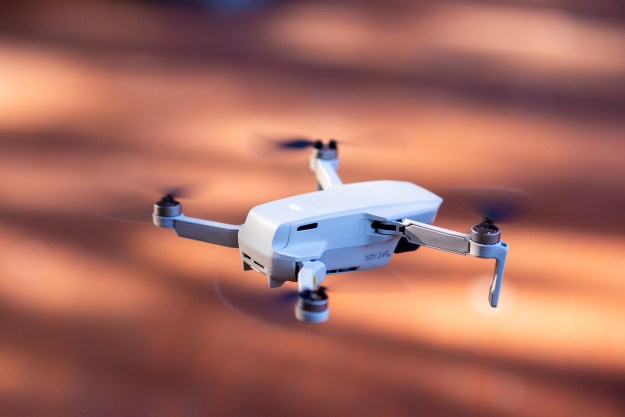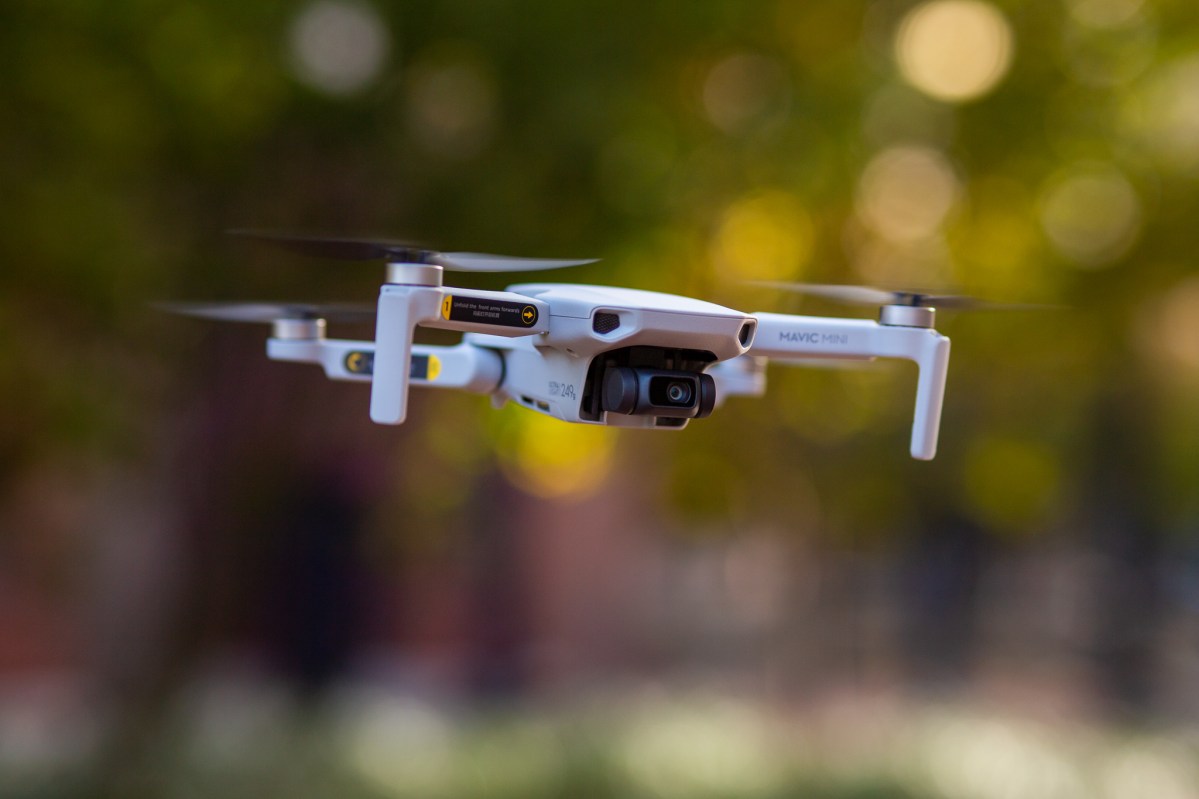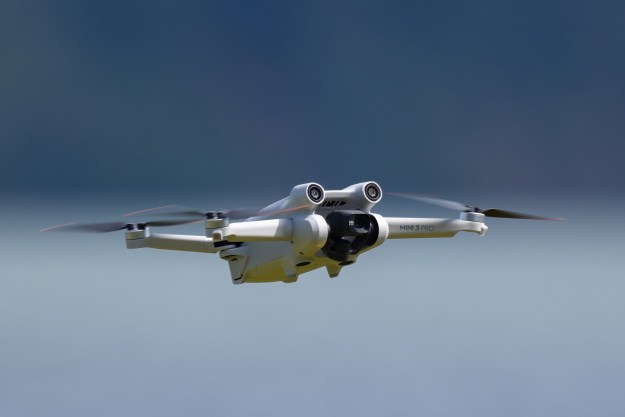
“DJI’s Mavic Mini is a relaxing return to the basics, but I wouldn’t want to live with it.”
- Easy to start flying
- Stable, reliable manners
- Extremely light and compact
- Impressive battery life
- No FAA registration required
- No obstacle avoidance
- No 4K video
- Lackluster video transmission system
I took DJI’s Mavic Mini drone along for a weekend getaway out to rural eastern Oregon. While there, I stayed in a small bed and breakfast and used that as my base of operations while I ventured out for a series of flight tests.
My time with the Mavic Mini mirrors my time at that rustic lodge. Refreshingly simple and basic – but not something I’d want to be stuck with. Here’s why.
Back to Basics
The Mavic Mini is the lightest drone in the Mavic line. This is true not only in terms of weight, but also in features and price. It’s the most affordable, stripped-down drone in the family.
Most of this was done in the name of weight. DJI went to great lengths to get the Mavic Mini down below 250 grams because drones beneath this weight threshold don’t need to be registered with the FAA before flight.
It’s the difference between popping over to eastern Oregon for a retreat, as I did, and traveling to Japan. Japan is great. It’s a wonderful place to visit. But getting there means taking an expensive 10 hour flight with customs checks on both ends. Flying the Mavic is as simple as driving to a bed & breakfast and forking over the modest nightly fee.

However, that ease comes with its own problems. DJI had cut out a few notable features that were present in earlier (and heavier) Mavic drones.
The Mavic Mini doesn’t include an obstacle avoidance system. It also doesn’t have DJI’s object tracking, gesture recognition, and auto-follow modes — all of which are computation intensive tasks that not only require a faster processor with more robust cooling.
Other features make compromises to reduce the price. The Mavic Mini doesn’t have a 4K camera on its nose, and instead boasts a maximum video resolution of 2.7K. And you won’t find DJI’s proprietary Ocusync or Lightbridge transmission technologies. The drone instead flies using a cheaper and slightly-less-reliable Wi-Fi-based system that makes the drone susceptible to interference.
Simple pleasures
So, the Mavic isn’t fancy. Yet fancy isn’t always needed to have a good time. A weekend trip is a a good time with minimal hassle. The Mavic mimics that. It lacks bells and whistles, but it’s still fun to fly.
DJI didn’t make any compromises on the Mavic Mini’s core flight performance. It’s every bit as quick, stable, and responsive in the air as its larger and more expensive predecessors. The crazy low weight doesn’t seem to be an issue. Even in windy conditions, this drone holds position like a spartan, and only goes where you command it to with your joysticks.

It also has a refreshingly streamlined feel. There’s just less stuff to worry about. Without all the buttons and extraneous menu options cluttering the flight interface, you can focus in on the fundamentals of flying and filming.
This is less a hobbyist device and more of a toy. That’s fine. Even great. DJI already makes a fleet of excellent high-end drones. The Mavic Mini add an approachable option the company lacked.
Streamlined yet stunted
Simple is nice for awhile, but there’s a reason a weekend getaway only lasts a weekend. Eventually, simple can become dull, repetitive, and overly familiar. That problem is the Mavic Mini’s most serious flaw.
After a few flights, I found myself longing for some of the features that come standard on DJI’s higher-end drones, like interference-free flying and obstacle avoidance.
Obstacle avoidance is a lot like internet connectivity. You don’t need it to survive, and it’s not too difficult to go without it for a few days. But it does make life easier, and once you’ve grown accustomed to having it, its absence makes you feel uneasy. I felt that uneasiness while flying the Mavic Mini.
The Mavic Mini is a cabin in the woods.
More than once, I worried I might clip a nearby tree branch. The Mavic Mini doesn’t have sensors to judge how close I was, to give the tree a wide berth just to be safe. Had I been flying any other Mavic drone (or even DJI’s Spark), this wouldn’t have been an issue. Those drones all have environmental sensors that prevent crashes.
I also wish the Mini had Ocusync, DJI’s video transmission system that’s protected against interference and feeds a real-time video feed from your drone in 1080p. The Mini’s Wi-Fi based transmission outperforms many other non-DJI drones when it comes to transmission quality and range. But fundamentally, this system is more susceptible to interference. I experienced a few glitches and stream skips. That doesn’t inspire confidence.
Our take
The Mavic Mini is a cabin in the woods. It’s refreshingly simple and has all the things you need to survive, but I wouldn’t want to live there full-time. The Mavic Mini is missing too many of the modern conveniences I love. Specifically, 4K video capture and automatic obstacle avoidance.
Is there a better alternative?
No. Not at this price, anyway. The Mavic Mini is definitely the best drone you can get for 400 bucks.
DJI’s Spark is slightly cheaper ($330 on Amazon) and does have a forward obstacle avoidance sensor, but it’s also a significant step down in terms of video capabilities, range, and battery life. So if price is your main concern, Mavic Mini will still get you more bang for your buck.
If the camera is what matters to you most, I suggest saving up and getting either a Parrot Anafi or DJI’s Mavic Air. For $700, Parrot’s drone boats a unique 4K HDR camera on a 180-degree gimbal that gives you the ability to film upward. Unfortunately, much like the Mavic Mini, it isn’t equipped with any kind of obstacle avoidance.
If you’re like me and you want a drone with both 4K video abilities and obstacle avoidance, then the best option is DJI’s Mavic Air. It’s slightly bigger than the Mavic Mini, but offers nearly double the video resolution and has a forward/backward/downward vision system that allows you to fly super confidently in any environment. The only downside is that it costs twice as much ($800).
Should you buy it?
Only if this is your first drone. Otherwise, stick to DJI’s more expensive and feature-rich options.
Editors' Recommendations
- The 3 best (reputable) DJI Drone alternatives in 2024
- DJI’s new Inspire 3 is an 8K drone for moviemakers
- Mavic 3 design change reduces the drone’s price
- How to watch DJI unveil an all-new drone today
- Watch this Mavic 3 drone soar above the world’s highest mountain




